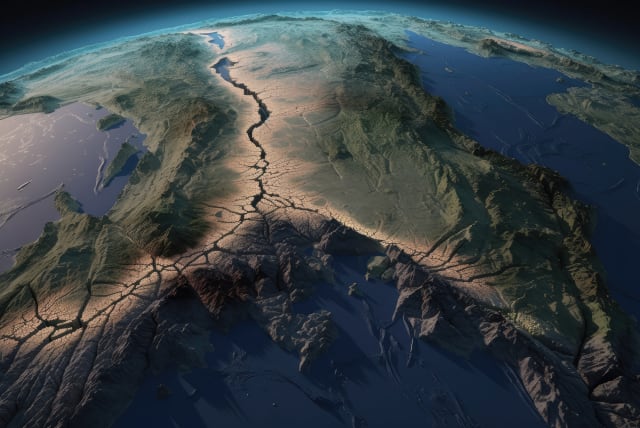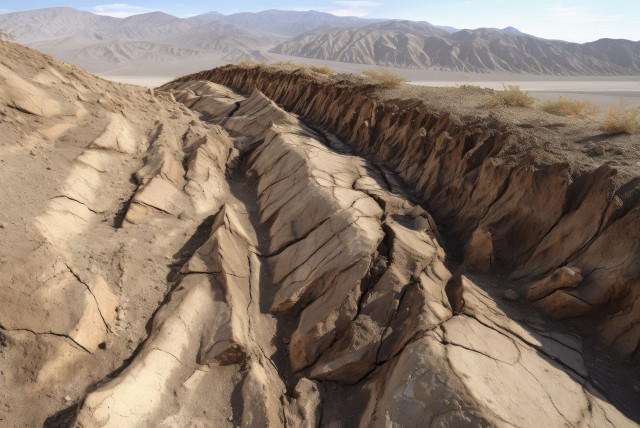How did the Earth's crust, tectonic plates form? - study

This information could help answer a fundamental question about our planet and could even help scientists understand more about the formation of other planets.
A recent study from Penn State is challenging existing theories about the formation of the Earth’s crust and tectonic plates.
Most existing theories suggest the rapid formation of tectonic plates earlier in Earth’s history however the new research suggests the Earth’s crust continued a process of reworking slowly billions of years, rather than rapidly slowing 3 billion years ago.
This information could help answer a fundamental question about our planet and could even help scientists understand more about the formation of other planets, according to lead author Jesse Reimink, assistant professor of geosciences.
“The dominating theory points to an inflection point some 3 billion years ago, implying we had a stagnant lid planet with no tectonic activity before a sudden shift to tectonic plates,” Reimink said. “We’ve shown that’s not the case.”
The study, published in Geochemical Perspectives Letters, analyzed over 600,000 rock samples from the Earth’s rock record database. Examining the geochemical composition and ages of the rocks allowed the researchers to reconstruct the crustal growth curve and determine how the rocks were reformed and reworked over time.
Researchers chose to analyze rock records instead of mineral samples, which informed the theory of a more sudden formation because the rock record is more sensitive and less prone to bias on those time scales.
The findings indicate that the Earth’s crust follows the pattern of the underlying mantle, suggesting a correlation between the two. This aligns with previous theories proposed by geoscientists, but this study is the first to provide empirical evidence from the rock record to support the idea of gradual crustal growth.
“We calculated how much reworking has happened by looking at the composition of igneous rocks in a new way that teases out the proportion of sediments,” Reimink stated.
Understanding the formation of planets
They used these calculations to calibrate the reworking documented in the rock records. Then, researchers calculated Earth’s crustal growth curve using the new understanding of how the rocks were reformed. They compared the newly calculated curve to the rate of growth gleaned from mineral records by other experts.
The findings indicate that the Earth’s crust follows the pattern of the underlying mantle, which suggests a correlation between the two. This aligns with previous theories proposed by geoscientists, however, this is the first study to provide empirical evidence from the rock record to support the idea of gradual crustal growth.
“Our crustal growth curve matches the mantle record of growth, so it seems like those two signals are overlapping in a way that they did not when using the mineral record to create the crustal growth curve,” Reimink said.
While the research improves our understanding of crustal growth, Reimink cautions that there are still limitations due to the scarcity of data currently available. However, further analysis of the existing data could provide insight into the evolution of Earth and other planets.
For example, studying Venus, which lacks tectonic plates, may provide more insight into the divergence between Earth and Venus and how different planetary bodies are formed.
“When did Earth and Venus become different?” Reimink asked. “And why did they become different? This crustal growth rate plays into that a lot. It tells the how, what and why of how planets evolved on different trajectories.”
Jerusalem Post Store
`; document.getElementById("linkPremium").innerHTML = cont; var divWithLink = document.getElementById("premium-link"); if (divWithLink !== null && divWithLink !== 'undefined') { divWithLink.style.border = "solid 1px #cb0f3e"; divWithLink.style.textAlign = "center"; divWithLink.style.marginBottom = "15px"; divWithLink.style.marginTop = "15px"; divWithLink.style.width = "100%"; divWithLink.style.backgroundColor = "#122952"; divWithLink.style.color = "#ffffff"; divWithLink.style.lineHeight = "1.5"; } } (function (v, i) { });

